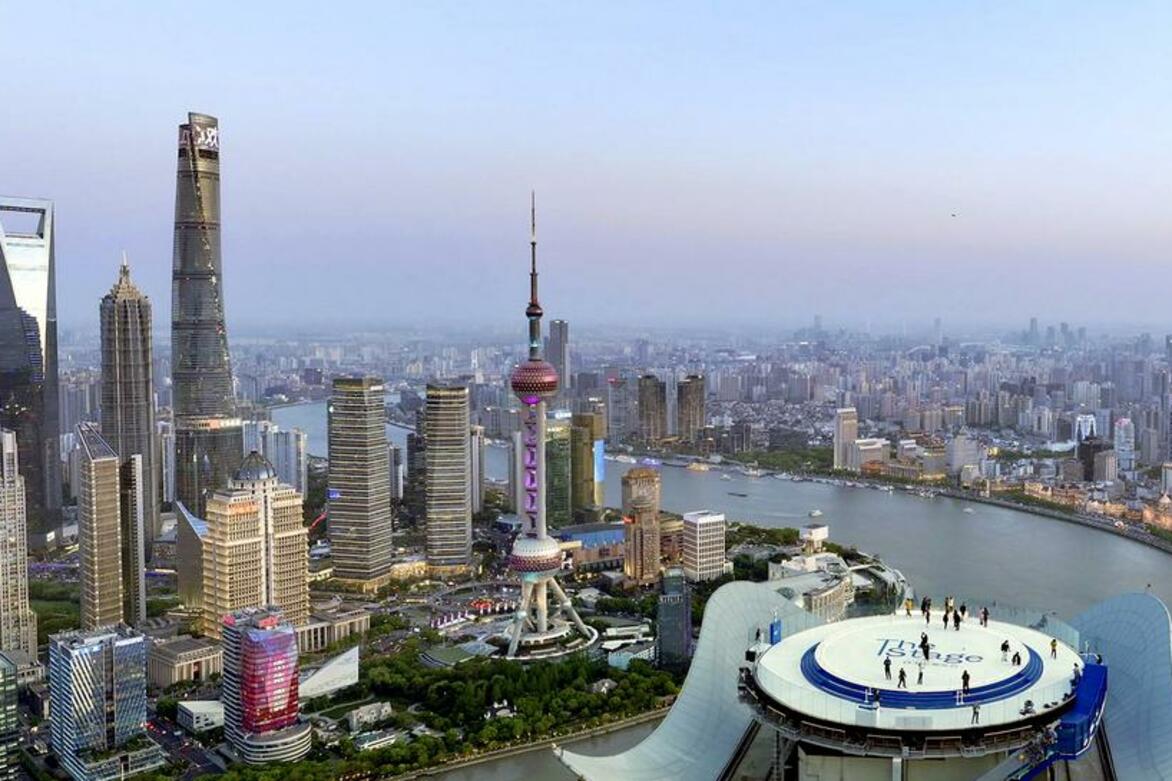Improved sentiment fuels recovery in China's property market
Xinhua
26 Apr 2025

BEIJING, April 26 (Xinhua) -- Zhou Mingzhu, a resident in the southern Chinese metropolis of Shenzhen, secured her second home earlier this month: a 66-square-meter apartment with two bedrooms.
"I think the market is stable right now, and it feels like a good time to buy," Zhou said. A sharp drop in the down payment ratio from 70 to 20 percent for second homes and falling mortgage rates made the purchase more affordable for her.
Zhou bought her new home at a property launch in Shenzhen's Longhua District. The project sold out in just 90 minutes.
The property market in Chinese first-tier cities has continued to recover, with new home sales remaining active and second-hand transactions showing a marked increase.
PROMISING SIGNS
Since the beginning of the year, local governments across the country have adopted a slew of measures, including lowering purchase thresholds, reducing taxes on home trade-ins and setting standards for "quality housing", to stabilize the housing market.
At the Dahongmen service center of Lianjia, a major real estate chain, signing rooms were filled with clients on Saturdays and Sundays. Since March, the center has averaged about 35 transactions per day on weekends. One agent said deals have been closing at a faster pace than before.
In Beijing, new home sales surged 125.6 percent in March from the previous month, while second-hand transactions rose 61.4 percent, according to data from local housing authorities. Shenzhen also saw a sharp increase, with new home transactions up 75.1 percent year on year from January 1 to April 16, and second-hand home sales rising 55 percent during this period.
Nationwide, 24 out of China's 70 major cities saw month-on-month increases in new home prices in March, up from 18 in February, according to the National Bureau of Statistics (NBS). Prices of second-hand homes rose in 10 cities in March, seven more than the previous month. Home prices in first-tier cities posted gains, while declines in second and third-tier cities generally narrowed.
Signs of stabilization in the housing market are also reflected in a more active land market. In the first quarter, major cities including Beijing, Shanghai and Hangzhou recorded multiple land deals exceeding 5 billion yuan (693 million U.S. dollars), with some plots seeing land premium rates of over 100 percent.
Nationwide, the land premium rate -- the percentage by which winning bids exceed starting prices -- averaged above 10 percent in key monitored cities in February, returning to double digits for the first time in 44 months, according to research institution CRIC.
A slew of fine-tuned housing policies adopted by local governments has helped unlock both essential and upgrade-driven housing demand, said Li Yujia, chief researcher at the Guangdong Housing Policy Research Center.
"The positive signals emerging in the real estate market are multifaceted, indicating that the trend toward stabilization is becoming more firmly established," Li said.
CHALLENGES REMAIN
Despite the promising signs, China's property market remains in a period of adjustment, with clear divergences across cities and within city submarkets. Third and fourth-tier cities, along with outer suburbs in all cities, face slower inventory clearance.
To address this imbalance, China now allows local governments to buy unsold commercial homes and convert them into affordable housing.
In Zhengzhou, the capital of central China's Henan Province, Zhengzhou Chengfa Anju Co. is spearheading such efforts and repurposing excess housing stock into apartments for young professionals -- known as "talent apartments."
For Wang Xiaodong, one such apartment offers more than just a place to live. The 40-square-meter one-bedroom unit he rents is fully furnished, and the building includes amenities such as a gym, a yoga room and a table tennis area. "It's comfortable to live in and affordable," Wang said.
Zhengzhou Chengfa Anju Co. has so far launched 37 such talent apartment projects across the city, providing 56,000 housing units and serving more than 60,000 young professionals. According to the company, the total number of units is expected to reach 100,000 by the end of 2026.
Across the country, more than 10 cities have already rolled out similar programs to revitalize property stock while addressing housing challenges faced by new urban residents and young people.
HIGH-QUALITY HOUSING
China's real estate sector still holds significant growth potential, driven by the ongoing upgrade in consumption and incomplete urbanization, according to Sheng Laiyun, deputy head of the NBS. He noted that demand remains strong for green, spacious and comfortable housing.
New national standards for residential projects are set to take effect on May 1, putting the improvement of housing quality in China on a faster track. The updated guidelines set higher requirements for factors such as ceiling height, elevator access and sound insulation, providing a clearer framework for building better-quality homes.
The first demonstration project from China's national "Good Housing" design competition was under construction near the Life Science Park in Changping District, Beijing. Among the early buyers is Chen Rui, who recently purchased a 117-square-meter unit with four bedrooms.
"The project includes 1,000 square meters of shared space, including a gym, children's playground, senior-friendly leisure areas, and co-working offices. Inside, the apartment features a flexible, adaptable layout that suits the needs of our family with two kids," Chen said.
Building a new model for the real estate sector requires efforts in both new construction and existing housing, according to Feng Bo, deputy director of the Chengdu Institute of Urban Construction and Development.
New projects should feature better design, materials, construction and services, while older neighborhoods should be upgraded through urban renewal to enhance public facilities and overall living conditions, Feng said.
